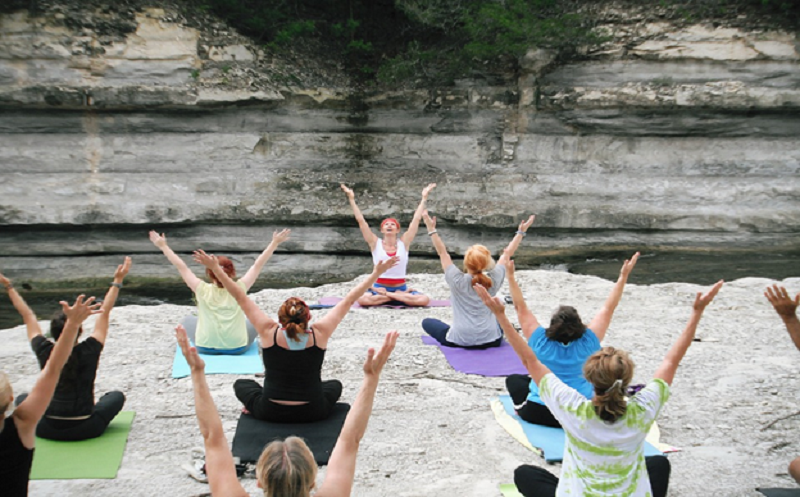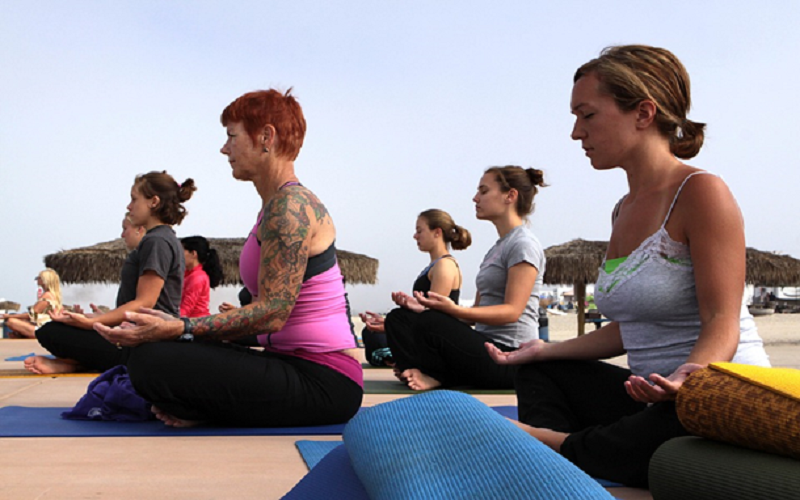
If you are a rookie to yoga, most likely you’ll have tons of questions about the requirements needed before you jump in. In general, the ideal way to approach yoga if you are new to it is to find a studio where you can get proper instruction. Studio classes are more costly but the expense is worth it if you are a first-timer.
If a yoga studio is not in your neighborhood, then of course your alternative will be video-based classes you can find on any related physical fitness website. Ensure though, that you used only those videos created by recognized yoga instructors and designed specifically for beginners.
How to Prepare
Preparation for your yoga class is minimal; all that is needed is your body. However, if you are a beginner it is best to arrive at class a little earlier so you can familiarize yourself with the environment and your instructor. Here are some tips to bear in mind.
- Be aware of the beginner-friendly poses: The different poses can be overwhelming at first, but with the internet, you can research the regular poses so they will not overwhelm you when the instructor refers to them. While it is unnecessary to practice the poses prior to starting the class, it is important that you familiarize yourself with the names and pictures, so you’ll have an understanding of what your body will be asked to do.
- Avoid heavy meals immediately before class: Eating a heavy meal immediately before you start yoga can really create stomach issues because the movement will cause
a churning of the food in your stomach, which will make you feel sick. A light snack one or two hours before is much better.
- Talk with your trainer: If you’re a beginner to yoga, inform the instructor before the class begins. This will allow your trainer to be more attentive to you during class and offer further cueing for necessary yoga poses.
Inform your trainer if you are pregnant or if you have any injuries and on how you view hand-on corrections. With this information, your teacher will try to ensure that your first class is comfortable and accessible as much as is possible.
- Warm up if you arrive early: Warm-ups are not necessary before a yoga class simply because they are integrated into each practice. However, there are warm-up poses you can try, which can better prepare you for your class.
Practice Guidelines
Yoga might be challenging from the initial practice to new postures, hearing new terminology while being engaged in a new environment. However, it is important to remember that you must keep breathing and continue focusing on yourself instead of the persons around you. In time, you will get the hang of it. Take note of following tips:
- Alignment: Alignment means the particular way the body lines up in each posture. It is important that you have a good alignment to maximize the benefits of every pose and reduce the likelihood of injury. In yoga practice, you should watch closely the alignment of your teacher.
- Look and Listen: While engaging in the initial learning of the poses, you can glance at others in the room to see what they are doing, but your teacher is your primary guide. Listen to the verbal cues your teacher gives regarding the procedure for each pose. As you listen, make the necessary adjustments to your body so you can improve on the alignment and pose.
- Stay Positive: It is important that you work with your teacher and follow suggestions on how to improve your postures. You need hands-on instructions to help you learn good form. Try not to be unduly critical of yourself by comparing yourself with what other the students in the class are achieving on their mats. Understand that yoga is an individual practice, where each person has different abilities and goals. Stay positive, enjoy yourself, and learn to laugh at yourself if you make mistakes while doing a pose.
- Trust your judgment: Your yoga practice is personal. You alone know what your body can do, so trust your inner feelings. In time, you will understand the difference between fearing what you cannot do, and that which is painful or may be unsafe for you.
Take your time to learn each pose correctly. Pay attention to what your body is saying to you about how to practice.
- Ask questions: Asking questions is probably the most important tip. Always ask questions when you don’t understand. Once it is related to yoga culture, other experienced students will be happy to share. However, direct questions about specific physical postures to your teacher during or after class. For additional information check this URL: https://www.encyclopedia.com/philosophy-and-religion/eastern-religions/hinduism/yoga

Class Manners
Common courtesy is the base of good manners in all situations. Learn to show respect and be mindful of the people around you. If you are anxious about your beginning yoga class here are some good etiquette practices to consider:
- Put your cell phone on silence: Do this immediately after arriving for class. A ringing cellphone during class can distract everyone including your instructor. If you forgot and your phone rings apologize and turn off immediately. Answering your phone or sending text messages is a no, no during class.
- Be punctual: Arriving at class at least 10 minutes earlier than scheduled allows you to check in, put your mat down and go to the restroom if you need to. If you are more than 10 minutes late for the start of class, don’t go in.
- Respect the mat space of others: Do your best and try not to step on the mats of the other students while practicing. If necessary, move your mat to accommodate another student’s mat.
- Respect the instructor: This is crucial and is absolutely necessary. If you find out that you don’t like your instructor, playlist or a specific yoga style, please don’t skip class. Follow the instructions your teacher gives and take your savasana. It is impolite to walk out in mid class.
- Bathroom time is during resting poses: Leaving class for a few minutes to go to the bathroom is ok. Don’t use the bathroom as an excuse for avoiding difficult poses or part of savasana.
- Don’t miss savasana: This is your closing relaxation, savasana is extremely important. If you have to leave class early, inform your teacher before class starts. Take a short savasana if you have to leave early.
